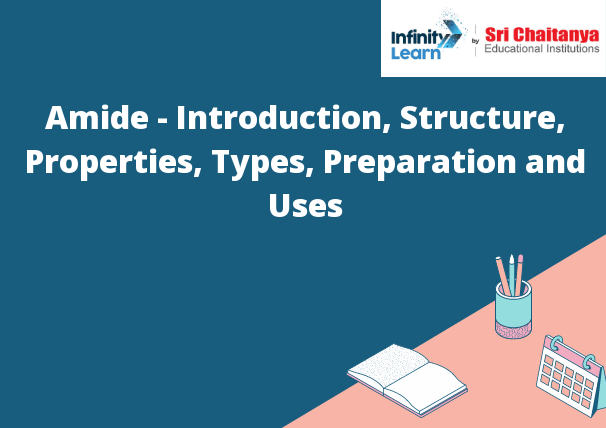Table of Contents
What is an Amide?
Amide – Introduction: An amide is a type of organic molecule that contains a nitrogen atom bonded to a carbon atom. The carbon atom is also bonded to two hydrogen atoms. The nitrogen atom is bonded to the carbon atom by a double bond.

Covalent Amides
Covalent amides are a type of organic compound that are formed when an amine and a carboxylic acid react. The amine and carboxylic acid each donate a pair of electrons to form a covalent bond. This covalent bond forms an amide group, which is an important functional group in many organic molecules.
Amide Nomenclature
- The amide functional group is characterized by the presence of a nitrogen atom bonded to two carbonyl groups. The nitrogen atom in an amide is sp2 hybridized, and the carbonyl groups are sp3 hybridized.
- The name of an amide is derived from the name of the two groups that are bonded to the nitrogen atom. The suffix -amide is added to the name of the first group, and the prefix N- is added to the name of the second group. For example, the amide formed by the bonding of acetone and ammonia is named N-acetamide.
Production of Amide
- An amide is a molecule that consists of a nitrogen atom bonded to a carbon atom bonded to an oxygen atom. The nitrogen atom in an amide is bonded to the carbon atom with a double bond, and the oxygen atom is bonded to the nitrogen atom with a single bond.
- An amide is formed when an amine reacts with a carboxylic acid. The amine group and the carboxylic acid group react to form a nitrogen-carbon-oxygen bond. The nitrogen in the amide is bonded to the carbon with a double bond and the oxygen is bonded to the nitrogen with a single bond.
Types of Amides
The following are the three types of amides:
1. Nitrogenous amides: These are amides in which the nitrogen atom is part of the amide functional group. E.g. amides, peptides, and proteins.
2. Sulfonamides: These are amides in which the nitrogen atom is part of a sulfonamide functional group. E.g. sulfa drugs.
3. Carboxamides: These are amides in which the nitrogen atom is part of a carboxamide functional group. E.g. acetic anhydride.
Amide Functional Group
The amide functional group is a type of organic functional group that consists of a nitrogen atom bonded to a carbonyl group (C=O). The amide functional group is found in a wide variety of molecules, including peptides, proteins, and amines. The nitrogen atom in an amide functional group can be either sp3 or sp2 hybridized, depending on the environment around the nitrogen atom.
Amide Structure
The amide linkage is a covalent bond between the nitrogen atom of an amine and the carbon atom of a carboxylic acid. This linkage is strong and resistant to hydrolysis. The amide linkage is also resonance stabilized, which makes it relatively inert to chemical attack.
Basicity
The acidity or basicity of a molecule is determined by the number of protons or electrons that it has. A molecule with a low number of protons or electrons is acidic, while a molecule with a high number of protons or electrons is basic.
Key Points of Amide
Bond Formation:
1. Amide bond formation is a process of linking two molecules together by the sharing of two electrons.
2. This process is catalyzed by an enzyme called peptidyl transferase.
3. The amide bond is a strong, covalent bond that is resistant to hydrolysis.
4. The amide bond is responsible for the characteristic peptide bond structure of proteins.









